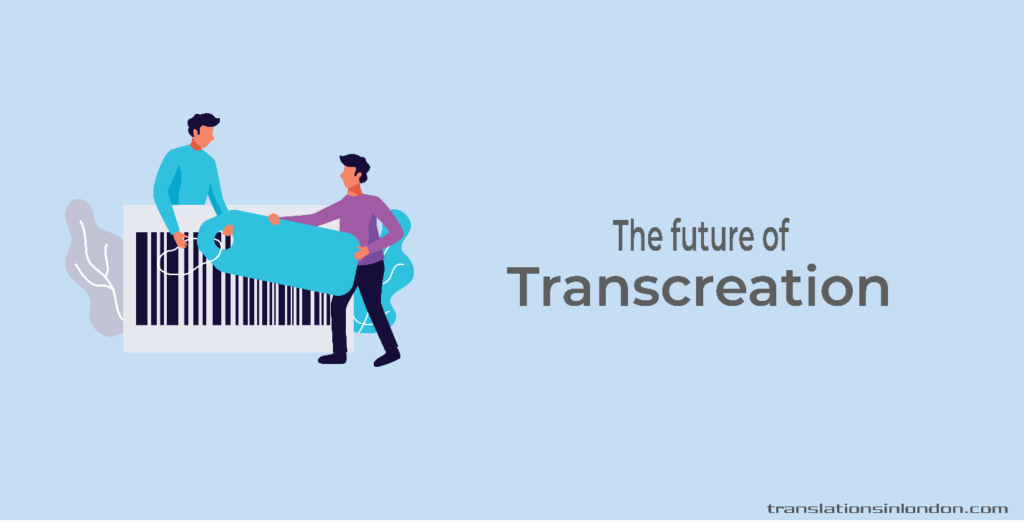As the world gets smaller due to internet-powered globalization and more opportunities keep emerging in foreign markets, brands with global expansion plans must position themselves to take advantage of these prospects as they come. A crucial component towards achieving this depends on how they (brands) can creatively adapt their message in other languages and still evoke the same desired emotional response with their foreign audiences. This is essentially what transcreation is all about.
But in a world fast evolving due to technology, what does the future hold for transcreation? What should brands and translation agencies be on the lookout for as consumer demands keep changing? In this article, we explore all these and a lot more.

What is transcreation, and where is it most used?
Transcreation comes from two words; “Translation” and “Creation”. Merely interpreting the two words separately gives you a sense of what it means. But in simple terms, transcreation is the process of creatively adapting a message to another language while conveying the message’s original subtleties like; style, context, emotion, and intent.
Transcreation is centered on marketing and advertising, two of which go hand-in-hand with one another. Otherwise, why would a business spend valuable resources looking for creative ways to adapt its message?
For this reason, brands utilize transcreation; as part of their branding (slogan and taglines), advert campaigns, marketing copies, brochures, and many more. We have seen past instances where the ordinary translation of a business’s content brought about negative outcomes and financial consequences.
Overview of the transcreation industry
Although transcreation may have only gone mainstream in the translation industry a few years ago (in the early 2000s), its usage in other segments like academia and gaming dates back more than 40 years ago. Once advertising agencies in the ’90s got wind of just how essential it was to adapt campaigns to a foreign audience, there was no going back.
The rise of the internet and digital marketing in recent times has seen transcreation take the main-stage. Digital marketing powered by social media has brought more platforms and content formats to the fold of diverse audiences. Formats, which are in the form of social posts, blogs, email newsletters, long and short format videos, and many more, all require creative ways to pass across a brand’s message, connect with the audience on a deeper level, and influence some form of conversion.
Technology driving the future of transcreation
It should be clear from the overview that now and going forward, technology has an important role to play and is a major driving force for transcreation. But you may be wondering how that would play out. Well, here are some ways;
The internet creating more aware consumers.
Internet proliferation and the abundance of information in the public domain have created an army of very informed consumers. Therefore, transcreators and translation agencies, in general, have to conduct extensive market research to know more about their audience preferences. They also need to be super creative when attempting to adapt a brand’s message to another language while at the same time maintaining the desired emotions, context, and intent.
AI and Big data influencing market research
We just mentioned how market research is crucial to establishing the right narrative in a brand’s message. Technological advances in artificial intelligence and machine learning, besides saving time, labor, and market research costs, would provide translation agencies with accurate and sufficient information that they need when creating a business’s campaign to a foreign audience. A transcreator’s focus can be towards creating the right message to bring about successful market entry.
Mobile marketing taking over
With over 2.71 billion smartphone users in the world presently and counting, it is no longer tenable to ignore this demographic who spend over three hours and fifteen minutes daily on their mobile device. The most logical thing to do for any business trying to capture a share of these users is to adapt and optimize your content for smartphone users. Translation agencies must develop messages that are catchy to grab the audience’s attention, but at the same time, are precise and straight-forward.
Other areas where technology affects transcreation, especially going forward; is in the rise of e-learning due to the pandemic and software localization.
Conclusion
The internet age may have brought along with it digital marketing that seems to pull down geographical barriers when it comes to doing business, but it also made transcreation at the heart of it since brands need to align their content and messages to potential foreign customers.
At the same time, technology is poised to be the primary driver for transcreation as we go forward, with the same internet and artificial intelligence playing pivotal roles.
Translation agencies must be ready to adopt technological advancements to enhance the adaptation of campaigns in other languages.
Translationinlondon has a team of creative specialists that use cutting-edge technologies to conduct market research to develop campaigns that give the best emotional response as you explore foreign markets.